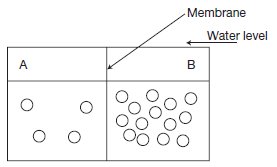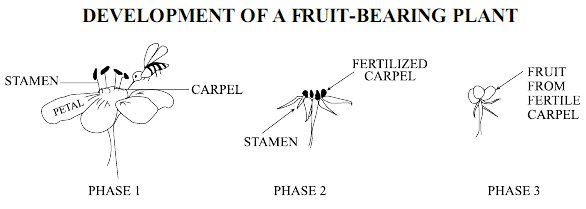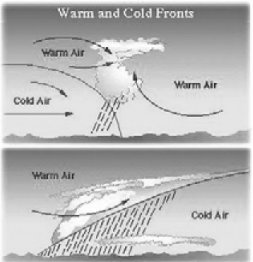Osmosis is the movement of water across a selectively permeable membrane in order to equalize the concentration (the amount of protein per milliliter of water) on two sides of the membrane. Consider the diagram below. The container is divided into two compartments, A and B, by a selectively permeable membrane. Each circle represents 100 protein molecules that can't pass through the membrane. The amount of water on two sides of the membrane is initially equal.What will happen as a result of osmosis?

Explanation
The concentration of protein in compartment B is higher. Because of the nature of the membrane, the protein can't pass through it. The only way for concentration to reach the same level in two compartments is for water to flow from A to B.
Visit our website for other GED topics now!
Related questions







